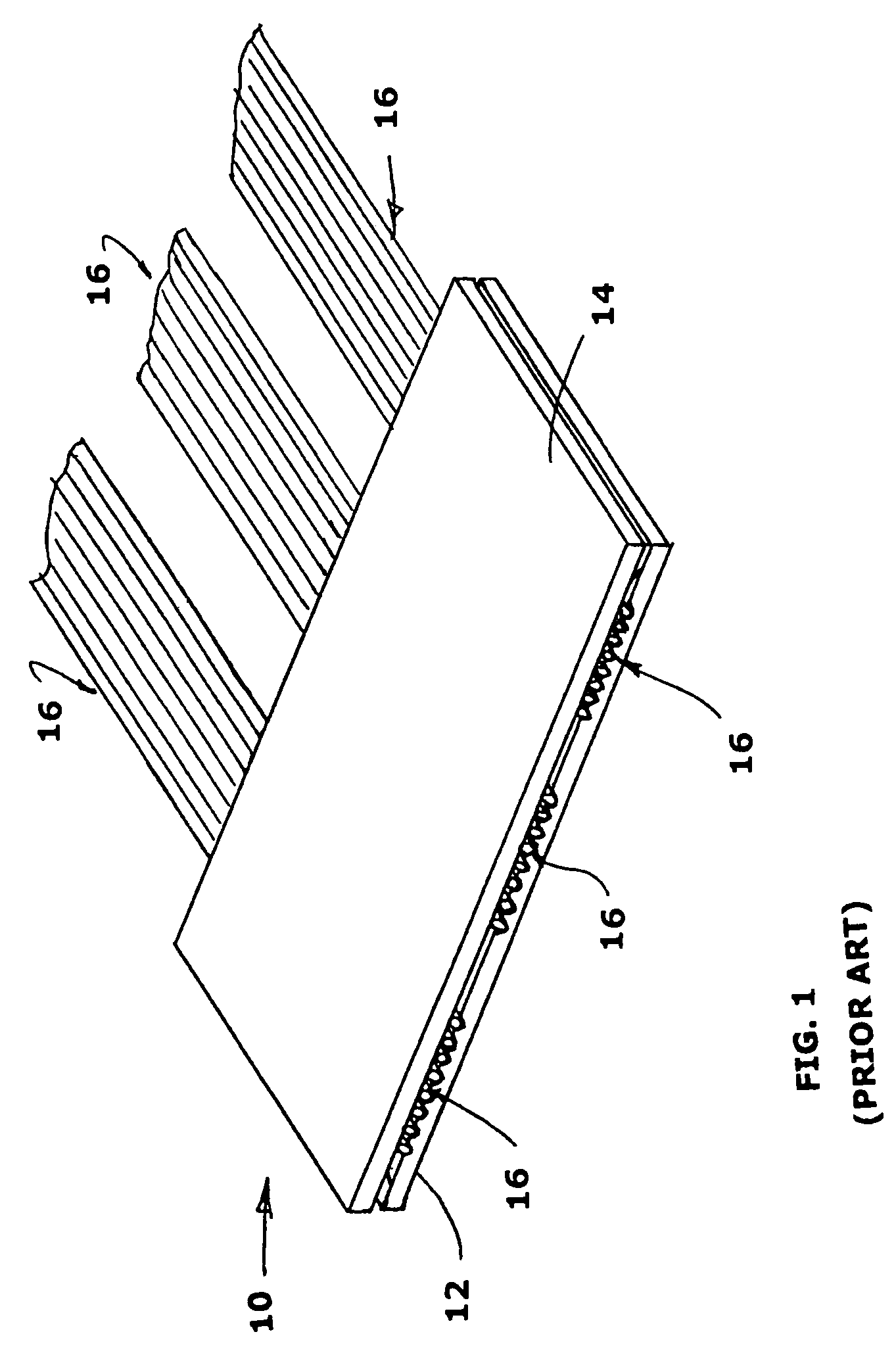Stress relief in fibre optic arrays
a technology stress relief, which is applied in the field of stress relief of fibre optic arrays, can solve the problems of affecting the distribution of stresses to which the fibres are subjected, the polarization-extinction ratio of pm fibres can be degraded by microbending, and the outboard or curb fibres of each array within the assembly appear to exhibit somewhat degraded extinction ratios, so as to reduce the polarization-extinction ratio ratio ratio ratio ratio ratio ratio ratio ratio ratio ratio ratio ratio
- Summary
- Abstract
- Description
- Claims
- Application Information
AI Technical Summary
Benefits of technology
Problems solved by technology
Method used
Image
Examples
Embodiment Construction
[0019]FIG. 1 shows a typical prior art 16 channel v-groove assembly 10 which includes a substrate 12, a cover plate 14 and three sets or arrays of PM fibres 16 held in the substrate 12. It is noted that in this example the fibres 16 are arranged in three sets or arrays of eight fibres each. Assemblies such as shown in FIG. 1 are available with any number of fibres contained therein, typical assemblies including arrays of 2, 3, 4, 8, 12, 16 . . . or 48 or more fibres. The number of fibres will depend of course on the particular application for which the assembly is to be used.
[0020]FIG. 2 shows that the substrate 12 has a plurality of v-shaped grooves 18 therein equally spaced apart across the substrate and opening to the upper surface 20 thereof. In the version shown in FIG. 2 the v-grooves 18 are shown in a set of eight, corresponding to one of the sets or arrays of fibres shown in FIG. 1. It is seen that each groove 18 contains a fibre 16 and that each fibre projects slightly abov...
PUM
 Login to View More
Login to View More Abstract
Description
Claims
Application Information
 Login to View More
Login to View More - R&D
- Intellectual Property
- Life Sciences
- Materials
- Tech Scout
- Unparalleled Data Quality
- Higher Quality Content
- 60% Fewer Hallucinations
Browse by: Latest US Patents, China's latest patents, Technical Efficacy Thesaurus, Application Domain, Technology Topic, Popular Technical Reports.
© 2025 PatSnap. All rights reserved.Legal|Privacy policy|Modern Slavery Act Transparency Statement|Sitemap|About US| Contact US: help@patsnap.com



